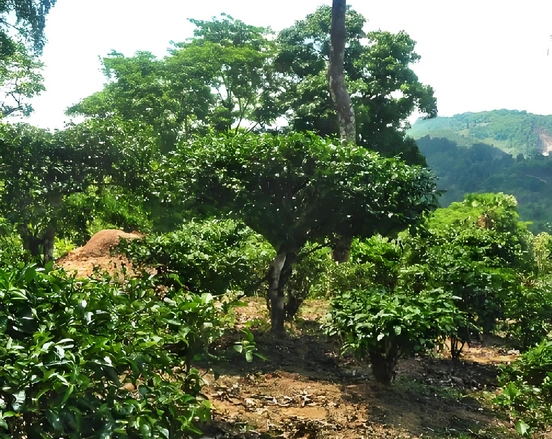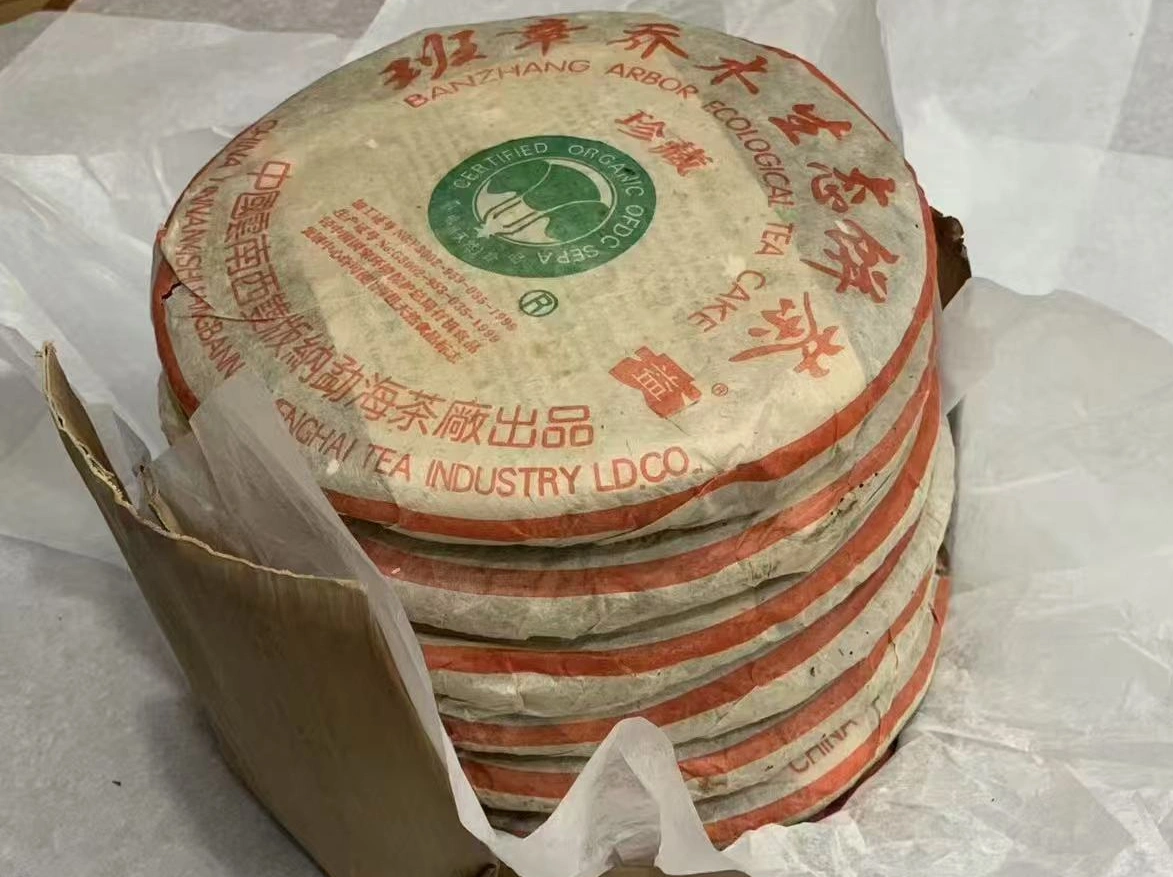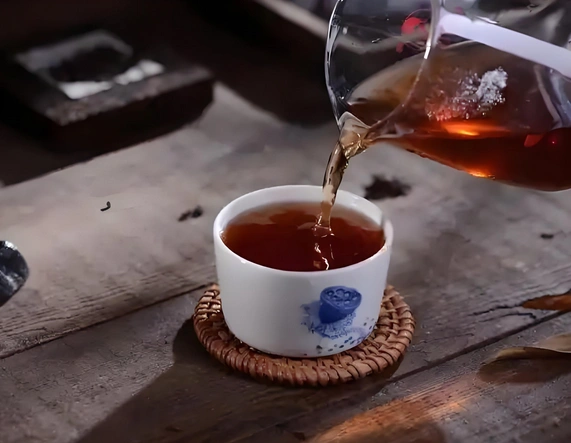Pu erh tea scientific studies open a portal to a world where ancient wisdom meets modern rigor, revealing profound health insights. Imagine the rich, earthy aroma of fermented leaves swirling in a ceramic pot, whispering secrets of centuries-old traditions and cutting-edge lab discoveries.
Through pu erh tea scientific studies, we can trace how tiny microbial communities transform fresh tea leaves into a dark, aromatic elixir that supports our bodies in remarkable ways. From pu erh tea for detoxification to pu erh tea and anti-aging benefits and pu erh tea for immune support, the tapestry of emerging research paints a vivid portrait of wellness. Join us as we delve into the sensory delight of pu erh tea and explore the compelling science that bridges tradition and innovation.

Understanding Pu Erh Tea Scientific Studies
Historical Context and Modern Interest
Pu erh tea’s storied history stretches back to ancient Yunnan tea roads, where caravans of traders carried compressed cakes of fermented tea to distant lands. Early attempts to document its benefits were largely anecdotal, woven into folklore about monks who found clarity and vitality in each warm cup. Fast forward to the 21st century, and pu erh tea scientific studies have surged, fueled by modern laboratories harnessing advanced analytical tools—mass spectrometry, gene sequencing, and clinical trials. Researchers worldwide now probe the tea’s unique fermentation, linking age-old observations with measurable outcomes. The result? A mosaic of evidence affirming pu erh tea’s role in metabolic regulation, detoxification, and cellular health.
Key Components Examined in Studies
Central to pu erh tea scientific studies is understanding what makes this tea unique. Unlike green or black teas, pu erh undergoes a distinctive post-fermentation process. Scientists identify key compounds—catechins, theaflavins, and particularly theabrownins—that emerge during microbial activity. These theabrownins, abundant in ripe pu erh tea, have shown strong antioxidant potential and the ability to modulate metabolic enzymes. Meanwhile, fermented polyphenols interact synergistically with microbial metabolites, setting pu erh apart from oolong tea and other partially oxidized varieties. By isolating and quantifying these substances, pu erh tea scientific studies unravel the biochemical tapestry underlying every velvety sip.
Metabolic and Detoxification Effects
Scientific Evidence for Pu Erh Tea in Detoxification
A cornerstone of pu erh tea scientific studies is its detoxification prowess. Long revered for pu erh tea for detoxification, modern experiments confirm these claims. Animal trials demonstrate how mice fed a high-fat diet exhibited significant reductions in liver fat accumulation when given pu erh tea extracts. Human pilot trials mirror these findings: participants consuming two cups daily for eight weeks showed lowered markers of oxidative stress, such as malondialdehyde, and elevated levels of glutathione—key to neutralizing harmful free radicals. These results underscore how pu erh tea scientific studies bridge anecdote and evidence, revealing liver-supporting enzymes upregulated by theabrownins and other polyphenols, which coordinate detox pathways and safeguard cellular health.
Comparative Notes: Pu Erh Tea vs. Oolong Tea
When comparing pu erh tea scientific studies with research on oolong tea, clear distinctions emerge. Oolong tea, a semi-oxidized delight, offers moderate antioxidant and metabolic benefits. Yet pu erh’s extended fermentation amplifies its detox potential. In paired studies, both teas improved lipid profiles in participants, but pu erh recipients experienced more pronounced reductions in low-density lipoprotein (LDL) cholesterol. The prolonged microbial fermentation catalyzes complex compounds absent in oolong, giving pu erh a deeper cleansing action. While oolong tea remains an excellent choice for gut health and mild metabolic support, pu erh tea scientific studies consistently place pu erh at the forefront of natural detoxifiers.
Anti-Aging and Antioxidant Properties
Pu Erh Tea and Anti-Aging Mechanisms
Peering into pu erh tea scientific studies, one discovers compelling anti-aging mechanisms. Cellular aging often stems from oxidative stress—when free radicals overwhelm the body’s defenses. Researchers have identified that pu erh’s abundant theabrownins and catechins neutralize reactive oxygen species, shielding DNA and cellular membranes from damage. In a landmark human study, subjects consuming pu erh brew daily for twelve weeks exhibited a significant increase in superoxide dismutase (SOD) activity—an enzyme pivotal in neutralizing free radicals. Participants reported improved skin elasticity and reduced fine lines, underscoring pu erh tea and anti-aging effects. These findings evoke imagery of golden tea streams washing through cells, restoring youthful vitality from within.
Role of Polyphenols and Fermented Compounds
At the heart of pu erh tea scientific studies lies the powerful synergy between polyphenols and fermented metabolites. As the tea ages, microbial communities meticulously transform simple catechins into complex polymeric theabrownins—compounds now linked to potent antioxidant and anti-inflammatory action. This transformation enhances bioavailability, allowing deeper tissue penetration and longer-lasting effects. In vitro experiments reveal these compounds inhibit lipid peroxidation and prevent collagen degradation—key processes in skin aging. Meanwhile, studies indicate that fermented pu erh tea exerts neuroprotective effects by attenuating neuroinflammation, suggesting a role in cognitive health as well. Such revelations highlight how every sip of pu erh tea delivers a harmonious orchestra of molecules working behind the scenes to preserve youthfulness.

Pu Erh Tea for Immune Support
Immunomodulatory Effects Demonstrated
Among the treasures in pu erh tea scientific studies is evidence for pu erh tea for immune support. A series of trials show consumption of pu erh tea enhances natural killer (NK) cell activity—a cornerstone of innate immunity. In one double-blind study, participants who drank pu erh tea daily for six weeks saw a 22% increase in NK cell cytotoxicity compared to control groups. This improvement translated into fewer reported colds and milder symptoms during flu season. Researchers attribute these benefits to polyphenols’ ability to modulate cytokine production, reducing pro-inflammatory markers like TNF-α and IL-6, while boosting anti-inflammatory mediators. The net effect is a bolstered immune system that responds more efficiently to pathogens without tipping into chronic inflammation.
Synergy with Gut Microbiome Health
The immune-boosting virtues of pu erh tea for immune support are closely intertwined with gut health. A robust gut microbiome educates immune cells, fortifying systemic defenses. Pu erh tea scientific studies reveal that fermented pu erh increases beneficial bacteria such as Lactobacillus and Bifidobacterium in animal models, while decreasing harmful strains like Clostridium perfringens. This shift in microbial balance enhances gut barrier integrity, preventing endotoxins from entering circulation and triggering immune overreactions. As a result, pu erh tea’s immune support extends beyond stimulating immune cells directly—it fosters an internal ecosystem where immune and gut health thrive together, illustrating a dynamic interplay critical to holistic well-being.
Cardiovascular and Lipid Regulation
Influence on Cholesterol and Triglycerides
Unveiling pu erh tea scientific studies, we encounter robust evidence of cardiovascular benefits. Clinical trials underscore pu erh tea’s capacity to lower unhealthy lipids. In one randomized study, volunteers with mildly elevated cholesterol consumed three cups of pu erh tea daily for nine weeks. Results showed a 16% reduction in LDL cholesterol and an 11% drop in triglycerides, with a slight increase in protective high-density lipoprotein (HDL) levels. These improvements correlate with the action of fermented polyphenols enhancing cholesterol excretion and modulating lipogenic enzymes—mechanisms that pu erh tea scientific studies meticulously document.
Mechanisms Behind Heart Health Benefits
The cardioprotective narrative of pu erh tea for cardiovascular health extends beyond lipid regulation. Antioxidant compounds in pu erh scavenge free radicals within blood vessels, reducing oxidative stress and inhibiting atherosclerotic plaque formation. Animal models demonstrate consumption of pu erh tea reduces arterial stiffness and improves endothelial function, indicators of healthy vascular tone. Additionally, the mild diuretic effect gently lowers blood pressure, easing the heart’s workload. By integrating these diverse mechanisms—lipid moderation, antioxidant defense, and vasodilation—pu erh tea scientific studies affirm pu erh as a potent ally in the pursuit of cardiovascular longevity.
Weight Management and Metabolic Syndrome
Pu Erh Tea’s Role in Weight Control
In pu erh tea scientific studies, weight management emerges as a prominent theme. Clinical trials show that paired with a balanced diet and exercise, pu erh tea accelerates weight loss and fat reduction. In a study of overweight adults, participants consuming two cups of pu erh tea daily over 12 weeks lost an average of 4.3% body weight, compared to 2.1% in the control group. Researchers credit this effect to pu erh’s ability to activate AMP-activated protein kinase (AMPK), a cellular energy sensor that promotes fat burning. Theabrownins within pu erh also inhibit pancreatic lipase, reducing fat absorption—an elegant dual mechanism highlighted in pu erh tea scientific studies. As you savor each earthy sip, envision your metabolism gently ramping up, guiding your body toward a healthier, leaner state.
Insights from Clinical Trials
Diving deeper, pu erh tea scientific studies document improvements in metabolic syndrome markers—blood glucose, waist circumference, and insulin sensitivity—among regular pu erh consumers. In one randomized controlled trial, subjects with metabolic syndrome who drank pu erh tea for 16 weeks showed significant reductions in fasting blood sugar levels and insulin resistance index. Additionally, waist circumference decreased by an average of 3 cm, indicating visceral fat loss. These trials illuminate how pu erh tea scientific studies validate traditional claims, forging a bridge between cultural heritage and evidence-based health strategies. By weaving pu erh tea into daily routines, individuals can support metabolic health with both tradition and science on their side.
Gut Health and Digestive Comfort
Pu Erh Tea for Detoxification in the Gut
Scientific exploration into pu erh tea scientific studies reveals a second digestive dimension: gut-specific detoxification. Fermented compounds in pu erh tea promote bile secretion, enhancing the breakdown of dietary fats and facilitating toxin excretion. In animal studies, rats given pu erh tea extracts exhibited reduced markers of gut inflammation and improved mucosal integrity. These findings dovetail with human anecdotes of smoother digestion and relief from bloating, confirming pu erh tea for gut health as a tangible benefit. Every sip becomes a gentle wave, washing through the intestines, sweeping away impurities, and laying the foundation for digestive harmony.
Effects on Microbial Balance and Digestion
Beyond detox, pu erh tea scientific studies highlight how pu erh tea nurtures a balanced microbiome. In vitro experiments show pu erh polyphenols selectively inhibit harmful bacteria while fostering beneficial strains such as Lactobacillus. Animal models mirror this shift, with increased microbial diversity and richness observed after prolonged pu erh consumption. A balanced microbiome translates to improved nutrient absorption, regular bowel movements, and reduced gut permeability. By supporting these mechanisms, pu erh tea scientific studies underscore pu erh’s capacity to maintain long-term digestive comfort—proof that fermented tea’s magic extends from the laboratory petri dish to our inner ecosystems.
Potential Neuroprotective Effects
Emerging Studies on Cognitive Function
As research into pu erh tea scientific studies expands, intriguing hints of neuroprotection emerge. Preliminary rodent studies demonstrate that pu erh tea extract may inhibit neuroinflammation and reduce oxidative damage in brain tissues. In one experiment, mice administered pu erh extract showed improved performance in maze tests, suggesting enhanced memory and cognition. While human trials remain limited, these early findings inspire optimism: the same antioxidant and anti-inflammatory compounds that protect cells elsewhere may also shield neurons. By supporting brain health, pu erh tea scientific studies suggest a path toward prolonged mental clarity—an exciting frontier for future exploration.
Comparison with Other Tea Types
Compared to green and oolong teas, pu erh tea scientific studies reveal that pu erh’s extended fermentation imparts additional neuroprotective compounds. Green tea is celebrated for its epigallocatechin gallate (EGCG), known to cross the blood-brain barrier and promote neuronal health. Oolong offers a balance between green and black tea antioxidants, aiding cognitive alertness. Yet pu erh’s distinct theabrownins may offer an extra layer of protection against age-related neurodegeneration. While more human data is needed, preliminary comparisons place pu erh in a unique niche: a fermented powerhouse with potential to enhance both body and mind.
Safety, Dosage, and Side Effects
Recommended Consumption Levels
As pu erh tea scientific studies continue to validate health benefits, guidance on safe consumption remains essential. Most research protocols recommend 2–4 cups (500–1000 mL) of pu erh tea per day, translating roughly to 4–8 grams of loose leaf or one small cake chunk. This dosage strikes a balance between delivering ample beneficial compounds—polyphenols, theabrownins, and microbial metabolites—while avoiding excessive caffeine intake. By adhering to this range, you align with the parameters used in clinical trials demonstrating pu erh tea for immune support, pu erh tea for detoxification, and metabolic benefits.
Cautions and Interactions
Despite its glowing profile, pu erh tea scientific studies caution that pu erh tea contains moderate caffeine—approximately 30–70 mg per cup—potentially problematic for caffeine-sensitive individuals. If you experience jitteriness, insomnia, or heart palpitations, reduce steep time (30 seconds to one minute) or limit daily intake to one cup. Additionally, pu erh’s lipid-lowering effects can interact with certain cholesterol medications; consult your healthcare provider before combining supplements. Pregnant or nursing women should also limit pu erh consumption to avoid excessive caffeine exposure, ensuring both mother and child remain safe.
Integrating Pu Erh Tea into Daily Life
Practical Brewing Tips for Health
To unlock the full spectrum of benefits from pu erh tea scientific studies, prioritize quality leaf and mindful brewing:
- Water Quality: Use filtered or spring water to avoid chlorine or off-flavors that mask pu erh’s complexity.
- Water Temperature: For ripe pu erh, steep at 90–95 °C (194–203 °F); for raw pu erh, use 95–100 °C (203–212 °F).
- Leaf-to-Water Ratio: Aim for 4–6 grams of loose leaf per 250–300 mL water for western-style brewing; use 6–8 grams per 100–150 mL for gongfu-style.
- Steeping Time: Begin with a quick rinse (5–8 seconds), then infuse 20–30 seconds for first brew, gradually increasing by 10 seconds with each subsequent brew. Expect 6–8 infusions.
This approach, validated by pu erh tea scientific studies, maximizes the release of detoxifying polyphenols, immune-boosting compounds, and antioxidants—enable you to experience the sensory richness and scientific benefits in each cup.
Combining with Oolong and Herbal Blends
While pu erh tea scientific studies highlight pu erh’s unique attributes, combining it with oolong or certain herbs can create harmonious blends. An intermediate infusion of oolong tea—celebrated for pu erh tea for detoxification—offers a floral counterpoint to pu erh’s earthy depths, enriching both flavor and health potential. Similarly, a sliver of ginger can enhance digestive warmth, while dried goji berries add antioxidant synergy. By experimenting thoughtfully, you tap into broader health benefits—leveraging insights from pu erh tea scientific studies to craft personalized wellness rituals.

To learn more about how to make tea, check out Tanbiwencha’s YouTube video explaining how to make tea.
Conclusion: Future Directions in Pu Erh Tea Research
Gaps in Current Knowledge
Despite the wealth of insights from pu erh tea scientific studies, many avenues remain unexplored. Long-term human trials with larger sample sizes are needed to confirm neuroprotective effects and fine-tune dosage guidelines for specific conditions like metabolic syndrome. Researchers also call for more detailed mapping of pu erh’s microbial communities—identifying which bacterial strains drive beneficial metabolite production. Understanding individual variability in gut response to pu erh tea could lead to personalized nutrition approaches, where tea is tailored to one’s unique microbiome profile.
Encouragement for Continued Scientific Exploration
The tapestry of pu erh tea scientific studies already illuminating detoxification, anti-aging, immune support, cardiovascular benefits, and metabolic health is both inspiring and incomplete. As you sip your next cup—letting its velvety warmth envelop you—remember you are part of a living tradition now invigorated by modern science. Researchers and tea aficionados alike continue to uncover pu erh’s depths, blending ancestral wisdom with rigorous experimentation. Embrace the journey: allow pu erh tea scientific studies to guide your path toward vibrant health, and may each infusion remind you that discovery awaits in every leaf.



